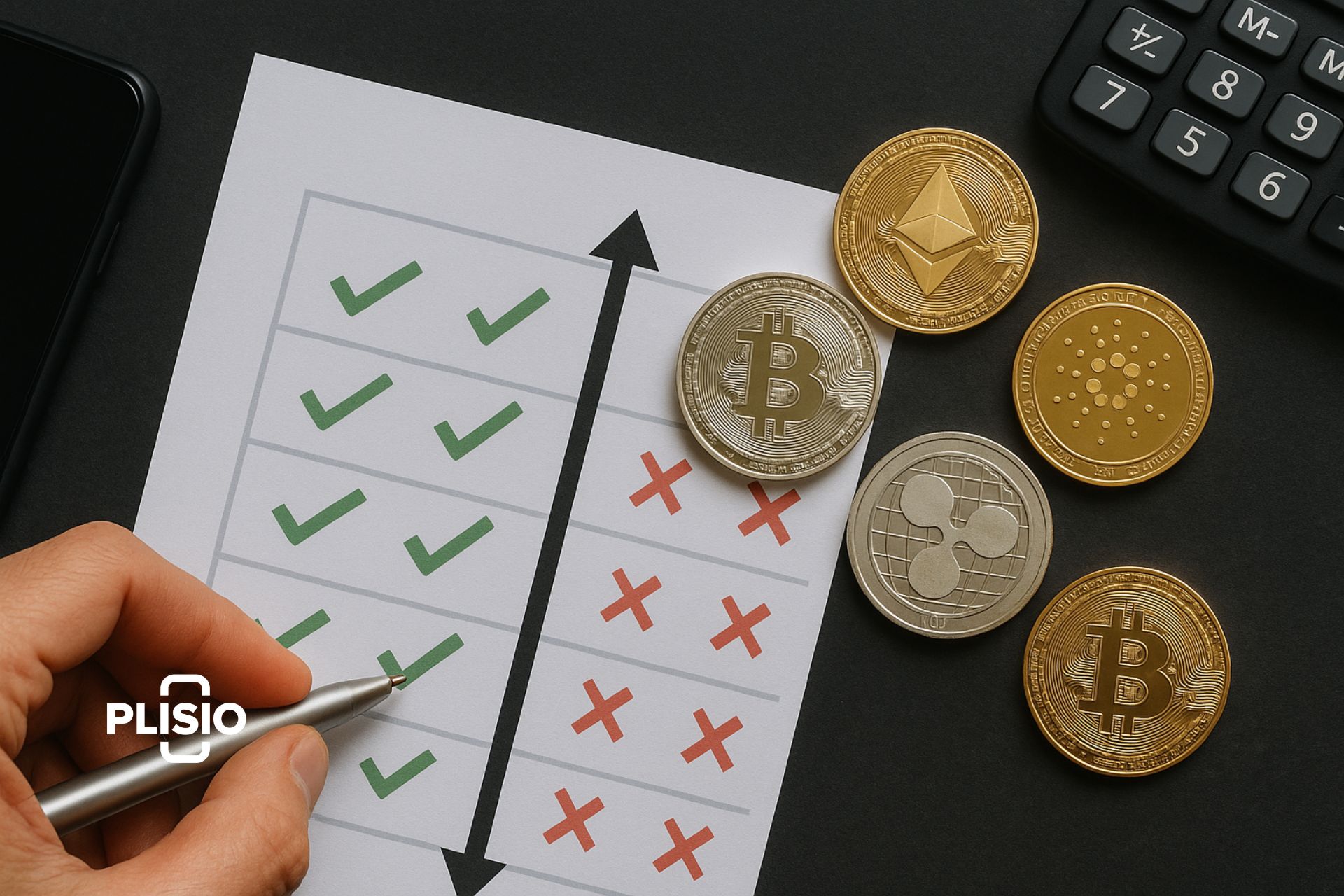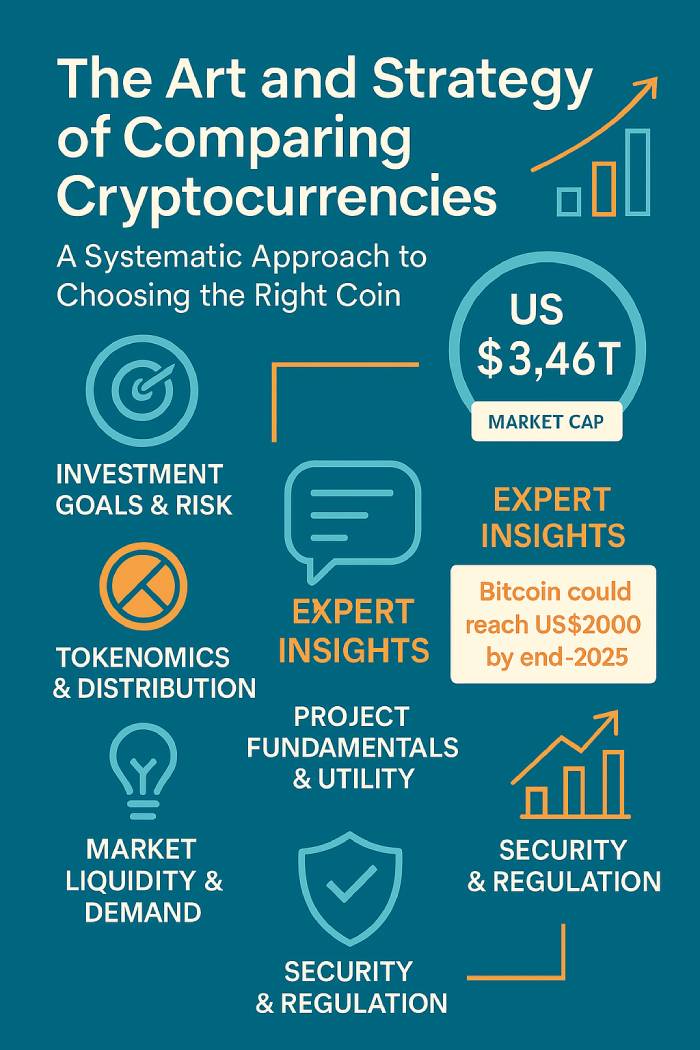The Art and Strategy of Comparing Cryptocurrencies: A Modern Guide to Choosing the Right Coin (2025 Edition)

The cryptocurrency market isn’t just expanding — it’s evolving at lightning speed. For investors, this means chasing price spikes alone is no longer enough. To navigate this complex space, you need a methodical way to compare coins, analyze their fundamentals, and understand the bigger picture. The question, “Which coin is better?” isn’t just casual curiosity anymore — it’s the foundation for smarter, more profitable decisions. In this guide, we’ll explore the essential criteria for evaluating cryptocurrencies and take a closer look at how to build a structured comparison strategy — backed by 2025 market data.
Why Listing Schedules Matter
When comparing coins, timing is everything. A token’s listing schedule isn’t just trivia — it often sets the tone for how the market will react. The exchange and timing of a listing can directly influence liquidity, exposure, and early price behavior. History shows that when coins debut on major platforms like Binance or Coinbase, price spikes often follow in the short term — offering both opportunity and risk.
For context: in Q2 2025, spot trading volume on top centralized exchanges hit US$3.9 trillion, before rebounding by 31.6% to US$5.1 trillion in Q3, according to CoinGecko. These fluctuations show how tightly investor sentiment is linked to listings and liquidity. Simply put, the bigger the exchange, the stronger the early traction.
Why Comparing Coins Is Critical
The crypto market is famously volatile — and unpredictable. Investing on hype or past performance is like walking a tightrope blindfolded. Solid comparison strategies, however, help investors cut through noise and focus on measurable factors like fundamentals, team credibility, and risk tolerance.
By mid-2025, the global crypto market cap climbed to US$3.46 trillion, marking a 28% increase since January. Yet, out of roughly 10,385 active cryptocurrencies, only a handful show consistent growth or innovation. In August 2025 alone, combined spot and derivatives volume exceeded US$9.7 trillion (CoinDesk). Clearly, the ability to compare and filter is more essential than ever.
Take TRON (TRX), for example. Its market cap jumped 17% in a single quarter, but its 100 billion token supply and high founder concentration still raise questions. This kind of imbalance demonstrates why metrics beyond technology — like governance, distribution, and transparency — can’t be ignored.
The Core Factors Behind Coin Comparison
1. Define Your Goals and Risk Tolerance
Before comparing coins, investors should start with themselves: What’s the goal? Are you chasing short-term profit or long-term growth? Some assets are built for fast gains but burn out quickly, while others reward patience. Knowing your comfort zone for risk helps you choose wisely and stay disciplined.
2. Understand the Project’s Value and Utility
Unlike stocks, crypto projects don’t come with balance sheets. Their worth depends on the problems they solve and the ecosystems they support. Whether it’s payments, smart contracts, DeFi tools, or data services — a coin’s real-world use case says more than its hype.
3. Analyze Tokenomics and Distribution
Token structure shapes stability. How tokens are distributed — between founders, investors, and the public — directly impacts long-term pricing. Coins with large unlocked supplies or uneven distribution face selling pressure sooner or later. For perspective, stablecoins held over US$230 billion in combined value by mid-2025 (ArXiv), showing investor preference for well-structured assets.
4. Examine Governance and Community Health
Behind every strong coin is an active, transparent community and fair governance model. Whether decentralized or hybrid, strong participation and frequent code updates signal a project’s durability. Notably, more than 60% of top 100 coins now operate under partially decentralized governance — a major leap toward trust and transparency.
5. Measure Liquidity and Real Demand
A coin without liquidity is a car without fuel. Even the most promising project can’t survive without an active market. Look at trading volumes, exchange listings, and liquidity pools. In Q3 2025, volumes surged above US$5 trillion, marking one of the busiest quarters in crypto history — proof that liquidity data belongs at the heart of every analysis.
6. Evaluate Security and Regulation Readiness
Crypto’s biggest threats remain security breaches and shifting regulations. Projects with regular audits, bug bounties, and compliance frameworks have a better chance of surviving the next bear cycle. In 2025, the Asia-Pacific region handled over US$2.36 trillion in crypto transactions — a 69% increase year-over-year (Chainalysis) — showing global adoption is rising alongside regulation.

How to Build a Comparison Framework
A structured approach turns guesswork into strategy:
- Narrow Down Your List: Start by filtering coins by market cap, utility, or technical innovation.
- Use Data, Not Emotion: Create a table with measurable metrics — volume, distribution, governance, developer activity — and let the numbers guide you.
- Tag and Rank Risks: Highlight assets that show volatility or questionable fundamentals. Reward those with strong growth, stability, or compliance.
- Stay Current: Revisit your analysis regularly. Crypto projects evolve fast — what looks promising today might lose traction tomorrow.
Expert Perspectives
Industry analysts agree that 2025 marks a turning point. “The second half of 2025 will redefine how Bitcoin and major altcoins are perceived — not just as speculative assets but as legitimate treasury instruments,” says Stephen Cole, CEO of a blockchain infrastructure firm. Financial advisor Ric Edelman echoes this sentiment, recommending 10–40% portfolio exposure to digital assets depending on risk appetite.
Meanwhile, economist Laura Shin warns: “The next growth phase in crypto won’t come from hype — it’ll come from projects that prove real-world value and compliance.” These insights align with what every serious investor should know: data matters, but context and critical thinking matter more.
Final Thoughts
No framework can guarantee success in crypto. Markets remain unpredictable, and sentiment shifts overnight. But using structured comparisons — supported by current data and expert insight — gives investors a genuine edge. Ultimately, the smartest strategy is balance: blend hard analysis with adaptability, and you’ll be better equipped to navigate the most dynamic market on Earth.

